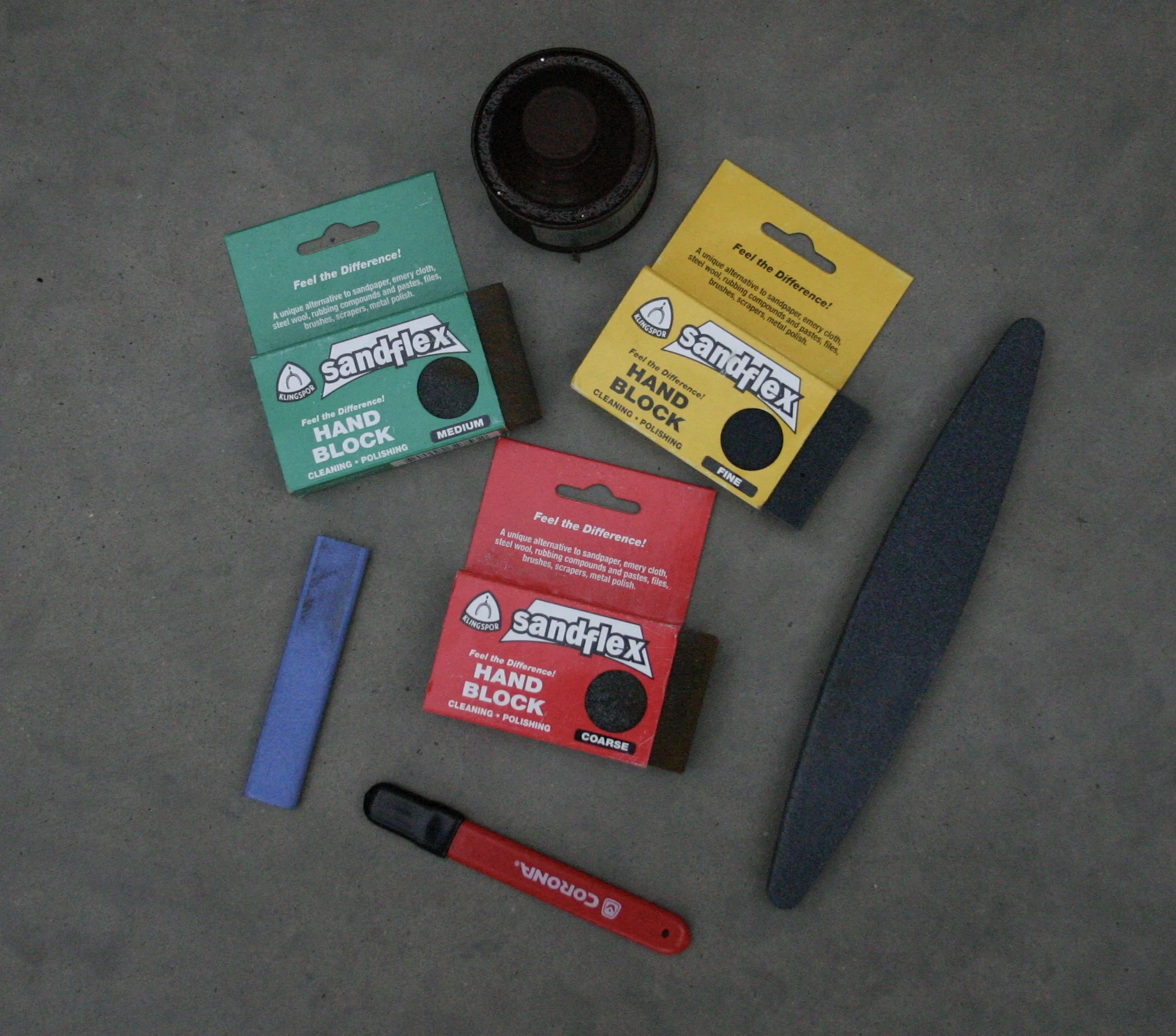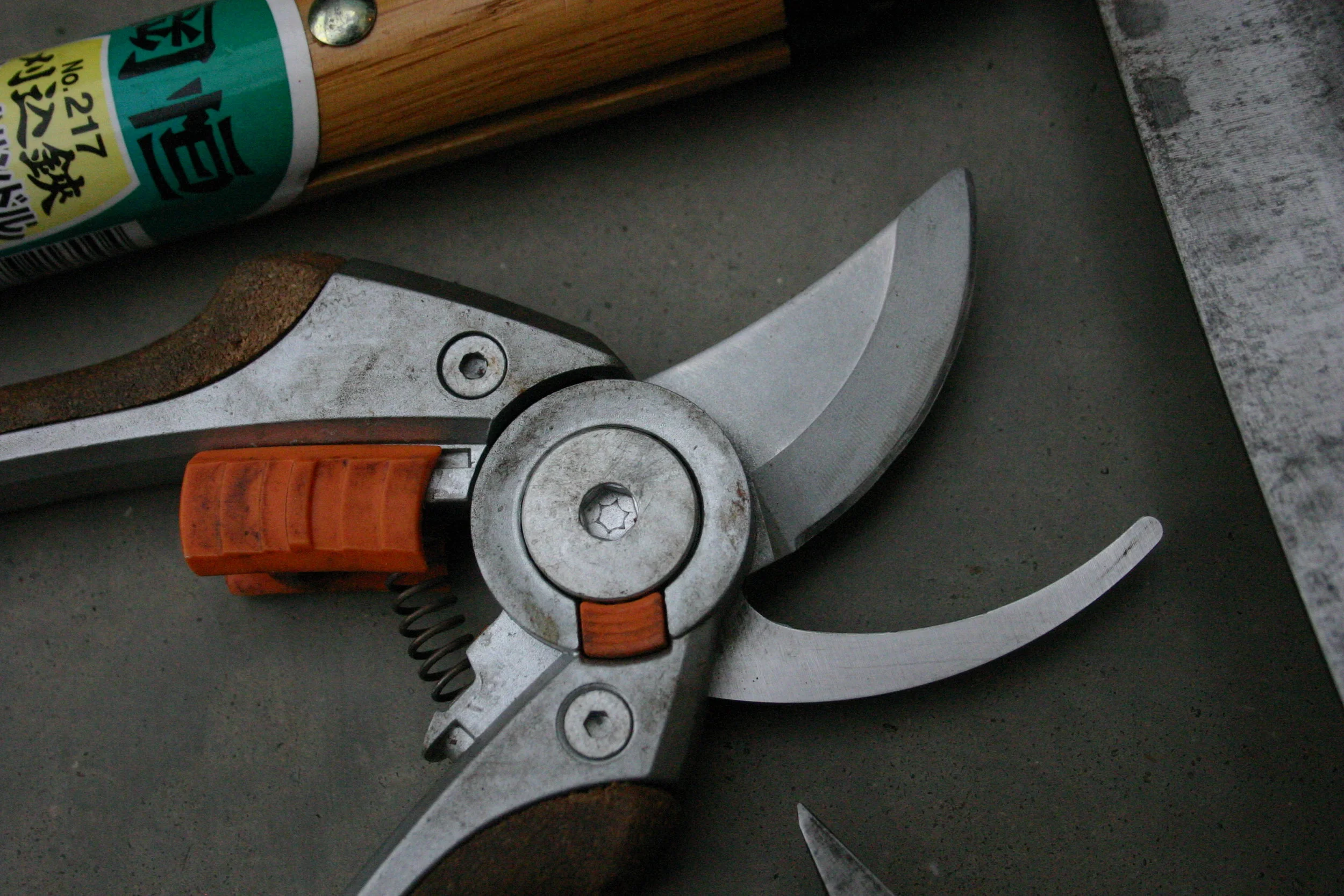There are lots of ways to clean and sharpen your tools. This is what I do. I hope it’s useful, particularly if you are new to gardening and need a ‘list of useful stuff’ so-to-speak.
First, get all the mud and grime off your tools as best you can, either with a stiff brush (I use the one from this set) or an old rag, or even by washing under the hosepipe or in the sink. Try not to get them totally wet though - you don’t want too much water getting into those hard-to-reach areas that can rust.
Cleaning: Rust removal.
If your tools are jammed with loads of rust then you might want to soak the affected area in white vinegar for a few hours. Take care with this as the vinegar will strip off any coating on the tool, so use caution here, but it’s an easy way to clean something passively and lazily.
If it’s just a normal amount of rust or tarnishing then I use a sanding block. I adore my Sandflex sanding blocks. They were given to me by a cousin from the states. They are basically foam, imbued with different levels of grit, so although they disintegrate over time, you never lose the coarseness because it goes all the way through the block.
Sandflex blocks in coarse, medium and fine
They are sort of soft and malleable in the hand which is a joy to work with - rather easier than wire wool (which is perfectly good if you don’t want to go for a sanding block. You can buy them in the UK but they are stupidly expensive, so if you want some I’d suggest purchasing from the USA (see link above) and waiting patiently for them. I’ve found these, which look to be a similar product from the UK. I’m pretty sure these blocks aren’t very eco-friendly as they are made from foam. Just saying - but they do make sanding a joy rather than a chore. For hard-to-reach places I have a set of these wire brushes which are brilliant.
Sharpening.
The act of sharpening tools can be deeply meditative with a bit of practice. I enjoy it rather more than I possibly should, and you might find that you get your kitchen knives out and start attacking them once you’ve finished with your gardening tools! You do need to practice a little and obviously take GREAT CARE with your blades, but once you’ve got the knack then it’s a joy. SWEAR.
clean, sharp tools!
I use three different things for sharpening. First, this coarse scythe stone from Draper tools. It makes light work of sharpening big blades (hoes, shears, carving knives etc) and it’s cheap as chips. A very good thing to have.
Next I use a Felco ceramic sharpener which I got with my secs years ago…brilliant for secateurs (obviously) and is a lovely size in the hand. This is all I use for secateurs, beginning with the blue side and finishing with the white. I also use this tool on my larger blades, after the scythe tool, to finish them off.
The third tool I have is this little gem called a Corona Sharpening tool which is teeny tiny and gets into all hard-to reach places without you having to take your tools apart. It’s a bit fiddly but worth the effort to get as much of the blade sharp as possible. Again this comes from the States but I’ve just found (and ordered) this, which looks like the same thing and is recommended by Which? so it MUST be good!
Once I’ve finished sharpening I oil my tools. This is a very good idea, both to protect the blades from moisture and to keep any wooden handles well conditioned. I use linseed oil for this, on a rag. The oil in the pic is v posh white oil from Burgon and Ball. I was given a pot of this by my mother (thanks mama!) and it’s great. To be honest I don’t clean my tools enough to know whether it’s better than linseed, but it’s certainly more expensive, and it’s in a pretty tin, so IDK you choose. If you can be bothered (and I generally can’t) you should oil your tools after each use (which would probably mean you never had to get a sanding block out again) but this is real life, so….ummmmm nope. If something is squeaky then I put a bit of 3 in one oil into the affected part. This is basically the same as WD40 but you have more control getting it to the right place.
My fab friend Andrew uses an oiled bucket of sand to keep his spades in good nick. I think this is a jolly good idea. I use one for my trowels too but don’t like it for anything with a ‘joint’ as the sand gets in there and the tool sounds uncomfortably arthritic. He also has a BRILLIANT plan to paint the handles of all his tools bright red or neon yellow to save him hours of peering about for them in flower beds. Genius as always.
x Laetitia
I do a weekly newsletter which is rather more personal than my blog, in which I relay my daily five minute endeavours, along with the odd extra project if I’ve been particularly productive. You can sign up here if you fancy it, and don’t worry, you can unsubscribe if you hate it!



